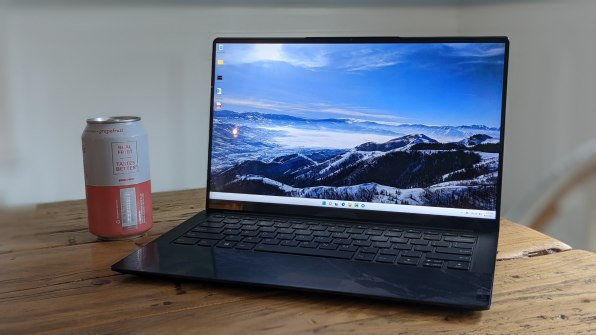[ad_1]
Even if I had no concept of how calendars work, I would know it’s back-to-school season right now. That’s because friends, family, and people I haven’t heard from in ages have all been coming out of the woodwork to ask about laptops.
I don’t mind. As a reasonably technical person with almost zero noteworthy skills or abilities outside the world of technology, it’s the very least I could do to give back.
Now, the interesting thing about people asking which laptop is “best” (especially when asking about Windows machines) is that they rarely have a specific price point in mind but they definitely don’t want to spend more than necessary. So the question they should be asking really is: How can I get the best deal on a worthy laptop without overspending?
In that vein, I generally adhere to the following three Goldilocks rules when recommending Windows laptops: not too cheap, not too expensive; not too big, not too small; not too underpowered, not too overpowered. Let’s dive in a bit deeper.
The nicest price
I have found the best price-to-performance range for Windows laptops to be between about $600 and $800 for most people.
For that, you’re generally getting above-average build quality, performance, battery life, and portability.

Now, this is assuming you’re looking for a computer to do general computer stuff. Nothing too fancy. In this price range, you’ll be able to get just about everything you need and nothing that you don’t.
So shoot for that price range and if you find a killer deal for, say $500, or you absolutely fall in love with something at $900, go for it. But start around $600-$800.
It’s all relative: size, weight, and battery
As you begin your search, you’ll notice that the vast majority of laptops sport screen sizes of 13.3, 14, or 15.6 inches. I believe the Goldilocks size here to be 14 inches. It keeps the laptop small and light but still gives you a comfortable viewing experience and a non-cramped keyboard.
You’ll also generally get a big enough battery to last a full day with mixed use. But whatever the manufacturer tells you about how long the battery lasts, cut it in half to be on the safe side. Those figures are often best-case scenarios.
When it comes to weight, shoot for 4 pounds, especially if you’re going to be toting this thing around all day. It’d be kind of hard to find a 14-inch laptop in this price range that weighs too much, but resist the temptation to step up to a 15.6-incher unless you really think you need it. It’ll weigh more and drain the battery quicker.

Finally, think long and hard about whether you need a touchscreen on your Windows laptop. Many of them in this price range just come with touchscreens, but I’d advise not going out of your way for one unless you’ve got a very specific use case in mind.
The last two laptops I’ve owned have had touchscreens and I’ve touched them each exactly one time, said, “Neat,” and then never touched them again.
Under the hood, memory is king
For doing regular computer stuff, you’ll be hard-pressed to fill up the hard drive or overtax the processor. In this price range, the absolute most important spec is memory—also referred to as RAM. Nothing less than 8GB will do, and if you can find 16GB, great. You may notice some machines that offer 12GB, which is a nice compromise.
Please don’t buy a laptop with only 4GB of memory.
I’ll add here that even if you want to stay under the $600 price point, please don’t buy a laptop with only 4GB of memory. It’s just not enough nowadays, but it’s still one of the big ways that laptop makers keep costs down.
Think of it like a tool belt. The bigger the tool belt, the more often-used tools you can keep close at hand. With RAM, programs don’t need to load stuff off the hard drive as often and it makes multitasking among multiple programs more seamless. The more RAM, the snappier the performance.
Adding it all up
So now that the hunt is on, we’re ideally looking for a 14-inch laptop that weighs less than 4 pounds, has 16GB of memory, and costs less than $800. There are plenty of them out there—good luck!
[ad_2]
Source link

